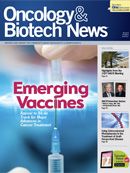Routine Tests and Procedures in Cardiac Patients May Increase Cancer Risk
Researchers have reported that acute myocardial infarction (MI) patients who are exposed to low-dose ionizing radiation from imaging and therapeutic procedures may be at increased risk of cancer.

Researchers have reported that acute myocardial infarction (MI) patients who are exposed to low-dose ionizing radiation from imaging and therapeutic procedures may be at increased risk of cancer. They said that the study is, to their knowledge, the first to document a direct link between cumulative exposure and cancer risk.
Mark J. Eisenberg, MD, with McGill University Health Center and the Jewish General Hospital in Montreal, Quebec, Canada, and colleagues reviewed the records of 82,261 patients who had an acute MI over a recent 10-year period and had no history of cancer. The team examined medical records to determine which cardiac radiologic procedures involving low-dose ionizing radiation patients had undergone for diagnostic or therapeutic reasons after their MI. The procedures included in the analysis were myocardial perfusion imaging, diagnostic cardiac catheterization, percutaneous coronary intervention, and cardiac resting ventriculography.
The researchers pointed out that there has been a paucity of data on the relation between exposure to low-dose ionizing radiation from medical procedures and the risk of cancer. Studies of atomic bomb survivors and workers in nuclear plants have demonstrated an increased incidence of cancer related to the radiation exposure, with the level of cancer risk correlated with the distance from the blast.
The Canadian study found that 77% of patients had undergone at least 1 cardiac imaging or therapeutic procedure involving low-dose ionizing radiation in the first year after their MI. Overall, 12,020 cancers were detected during follow-up. While there was a broad distribution of cancers, those affecting the abdomen/ pelvis and thorax accounted for roughly two-thirds of cancers.
The analysis showed a dose-dependent relation between radiation exposure from cardiac procedures and subsequent cancer risk. Thus, for every 10 millisieverts (mSv) of radiation, there was a 3% increase in the risk of age- and sex-adjusted cancer during a mean 5-year followup. In addition, while the majority of patients were exposed to low or moderate radiation levels, a “substantial” group was exposed to high levels. These patients were usually young males with fewer comorbidities. The level of exposure to lowdose ionizing radiation was higher when patients were treated by a cardiologist than a general practitioner.
Eisenberg and associates said that their findings may mean that clinicians should soften their enthusiasm for imaging and therapeutic procedures after an acute MI. At the very least, practitioners should consider documenting the imaging and procedures that each patient undergoes and estimating his or her cumulative exposure to lowdose ionizing radiation.
The researchers also emphasized that despite potentially adverse effects of ionizing radiation, the benefits these procedures provide cannot be minimized.
“The potential increase in cancerrelated deaths associated with exposure to radiation from cardiac imaging and therapeutic procedures has to be weighed against the potential risk of death from cardiovascular diseases for which these procedures are indicated and the resulting decrease in mortality expected with their use,” said Eisenberg and colleagues. Unfortunately, their study was not able to determine how to balance these “competing risks.”
Eisenberg MJ, Afilalo J, Lawler PR, et al. Cancer risk related to low-dose ionizing radiation from cardiac imaging in patients after acute myocardial infarction. CMAJ. 2011;183(4):430-436. doi: 10:1503/ cmaj.100463. [Epub ahead of print]




